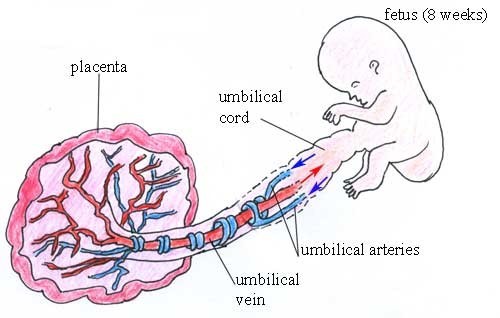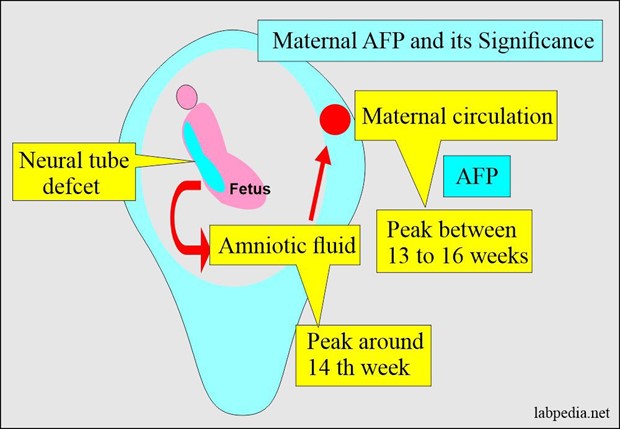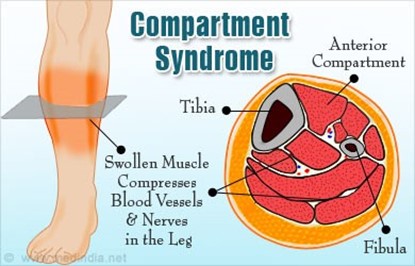The nursing instructor is illustrating the circulatory flow between the mother and fetus.
The instructor determines the session is successful when the class correctly chooses which structure with which route.
The one umbilical vein carries oxygen-rich blood to the fetus from the placenta.
The two umbilical arteries carry waste products from the placenta to the fetus.
The two umbilical veins carry waste products from the fetus to the placenta.
The one umbilical artery carries oxygen-rich blood to the fetus from the placenta.
The Correct Answer is A
The umbilical vein carries oxygen-rich blood to the fetus from the placenta.
The umbilical vein is an important part of fetal circulation and carries oxygenated blood from the placenta into the growing fetus.

Choice B is incorrect because the two umbilical arteries carry deoxygenated blood from the fetus to the placenta23.
Choice C is incorrect because there are not two umbilical veins, but only one12.
Choice D is incorrect because it is not the one umbilical artery that carries oxygen-rich blood to the fetus from the placenta, but rather the one umbilical vein14.
Nursing Test Bank
Naxlex Comprehensive Predictor Exams
Related Questions
Correct Answer is C
Explanation
Elevated levels of MSAFP may indicate that the baby is at risk of a neural tube defect, like spina bifida.
However, further testing is required to confirm the results and determine the cause of the elevated levels.

Choice A is incorrect because low levels of MSAFP may indicate a risk for Down syndrome, not elevated levels.
Choice B is incorrect because while elevated levels of MSAFP may indicate a risk for neural tube defects, further testing is required to confirm this.
Choice D is incorrect because while repeating the test may be necessary, further testing beyond just repeating the MSAFP screening may also be required.
Correct Answer is D
Explanation
Compartment syndrome is a condition where increased pressure within a muscle compartment causes muscle and nerve damage along with pain.
One of the symptoms of compartment syndrome is severe pain that increases with the stretching of muscles.

Choice A is not correct because blue-looking nail beds on the toes are not a symptom of compartment syndrome.
Choice B is not correct because a weak femoral pulse is not a symptom of compartment syndrome.
Choice C is not correct because the inability to plantarflex the foot is not a symptom of compartment syndrome.
Whether you are a student looking to ace your exams or a practicing nurse seeking to enhance your expertise , our nursing education contents will empower you with the confidence and competence to make a difference in the lives of patients and become a respected leader in the healthcare field.
Visit Naxlex, invest in your future and unlock endless possibilities with our unparalleled nursing education contents today
Report Wrong Answer on the Current Question
Do you disagree with the answer? If yes, what is your expected answer? Explain.
Kindly be descriptive with the issue you are facing.
